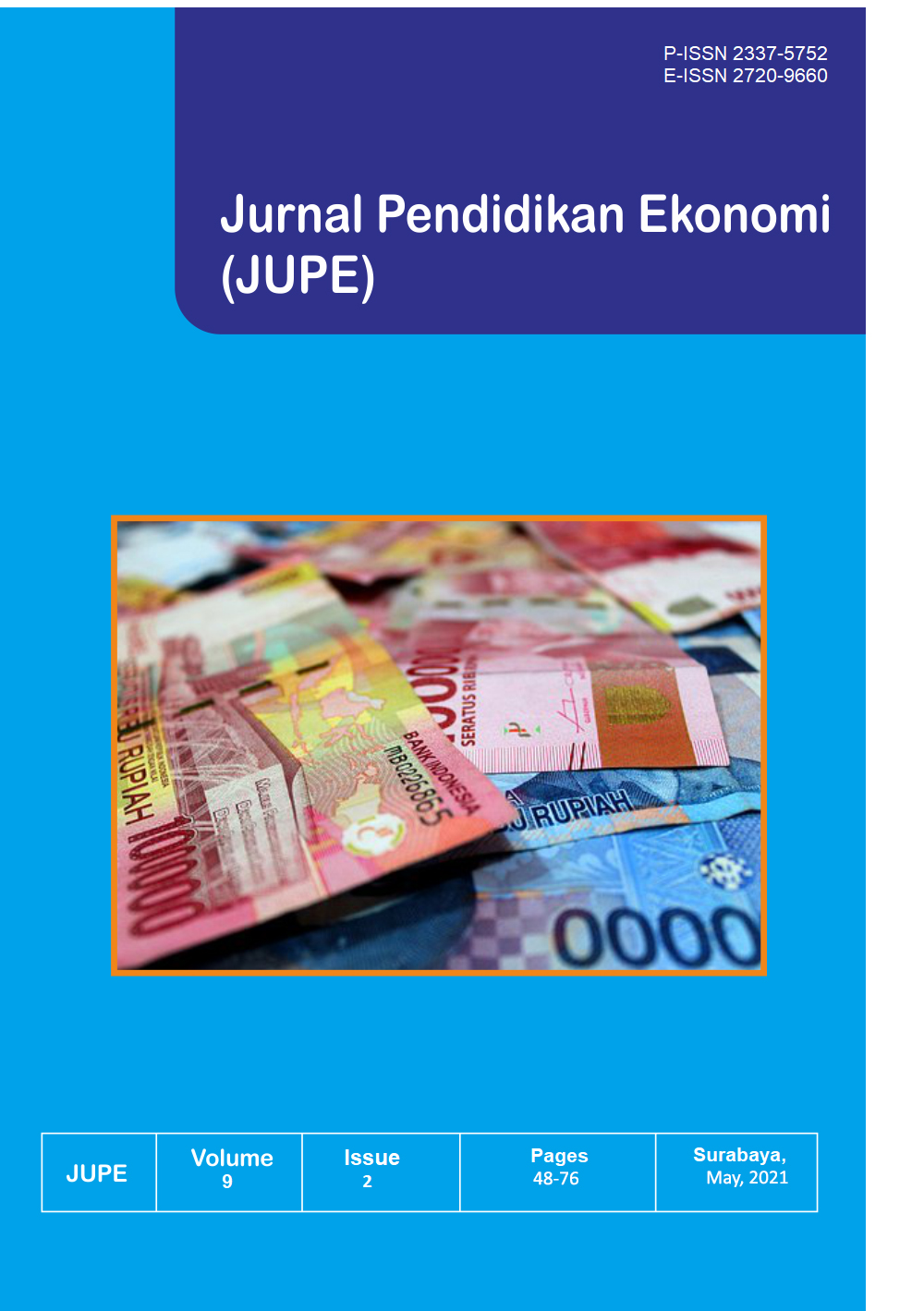Perbedaan Minat Wirausaha Berdasarkan Media Pembelajaran Selama Pembelajaran Jarak Jauh di Masa Pandemi
DOI:
https://doi.org/10.26740/jupe.v9n2.p48-53Keywords:
entrepreneur interest, learning media, distance learningAbstract
When the teaching and learning process suddenly changes from classical to distance learning (PJJ), it is necessary to adjust the methods and media with the learning materials. Distance learning has limited learning tools and media that can be used, such as instant messaging applications, video recording and video conferencing. Entrepreneurship courses are taught using video and instant messages and are expected to achieve learner goals, making students have an interest in becoming an entrepreneur after graduation. The use of learning media during PJJ needs to be seen on the level of its influence on learning objectives, therefore it is necessary to see whether there are differences in the level of student entrepreneurial interest based on video and instant messages. There were 128 students who received entrepreneurship courses as the research sample and the t-test method was used to determine whether there was a difference between the two media. The test results show that the level of student interest in entrepreneurship is in the low category and there is no difference in the effect of the use of video and instant messages on student interest in entrepreneurship.
Downloads
Downloads
Published
How to Cite
Issue
Section
License
Copyright
- Authors retain copyright and grant the journal right of first publication with the work simultaneously licensed under a Creative Commons Attribution License that allows others to share the work with an acknowledgment of the work's authorship and initial publication in this journal.
 Abstract views: 290
,
Abstract views: 290
, PDF Downloads: 379
PDF Downloads: 379











